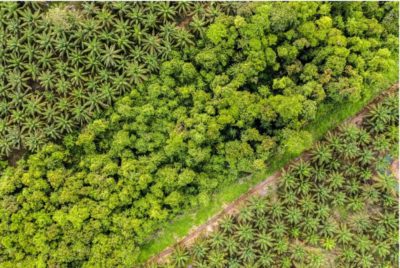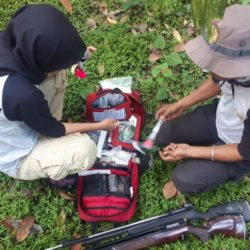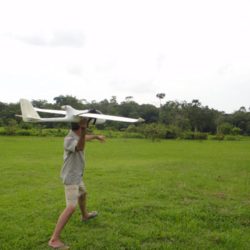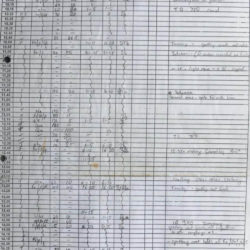Aerial footage of a forest corridor running through an oil palm plantation in Sabah, Malaysian Borneo. Sabah’s rainforests have been extensively degraded and fragmented by oil palm plantations and industrial logging. These developments threaten the survival of orangutans, which have historically lived in large, unbroken areas of rainforest. However, recent research carried out in this area over two decades suggests that orangutans are more resilient and adaptable than previously thought, and are able to survive—even reproduce—in forest patches in anthropogenic (human-modified) landscapes. Forest corridors are strips of wooded jungle that connect these forest patches and larger forest areas. They allow orangutans and many other species to move across plantation and other anthropogenic landscapes, boosting their overall populations’ chances of survival. In this way, forest corridors facilitate various kinds of collaboration between nonhuman entities (notably plants and animals), while also requiring ongoing collaboration between two seemingly opposed sectors: corporations and conservationists.
Go back to view gallery






